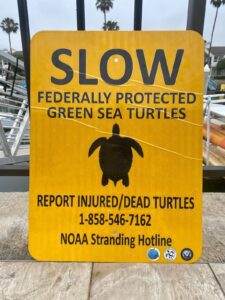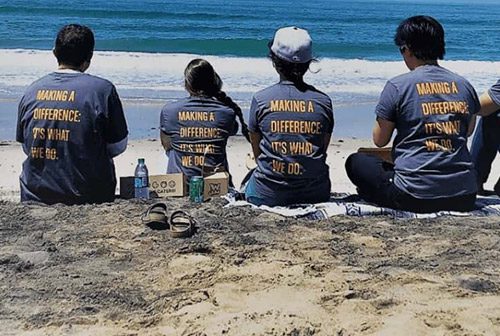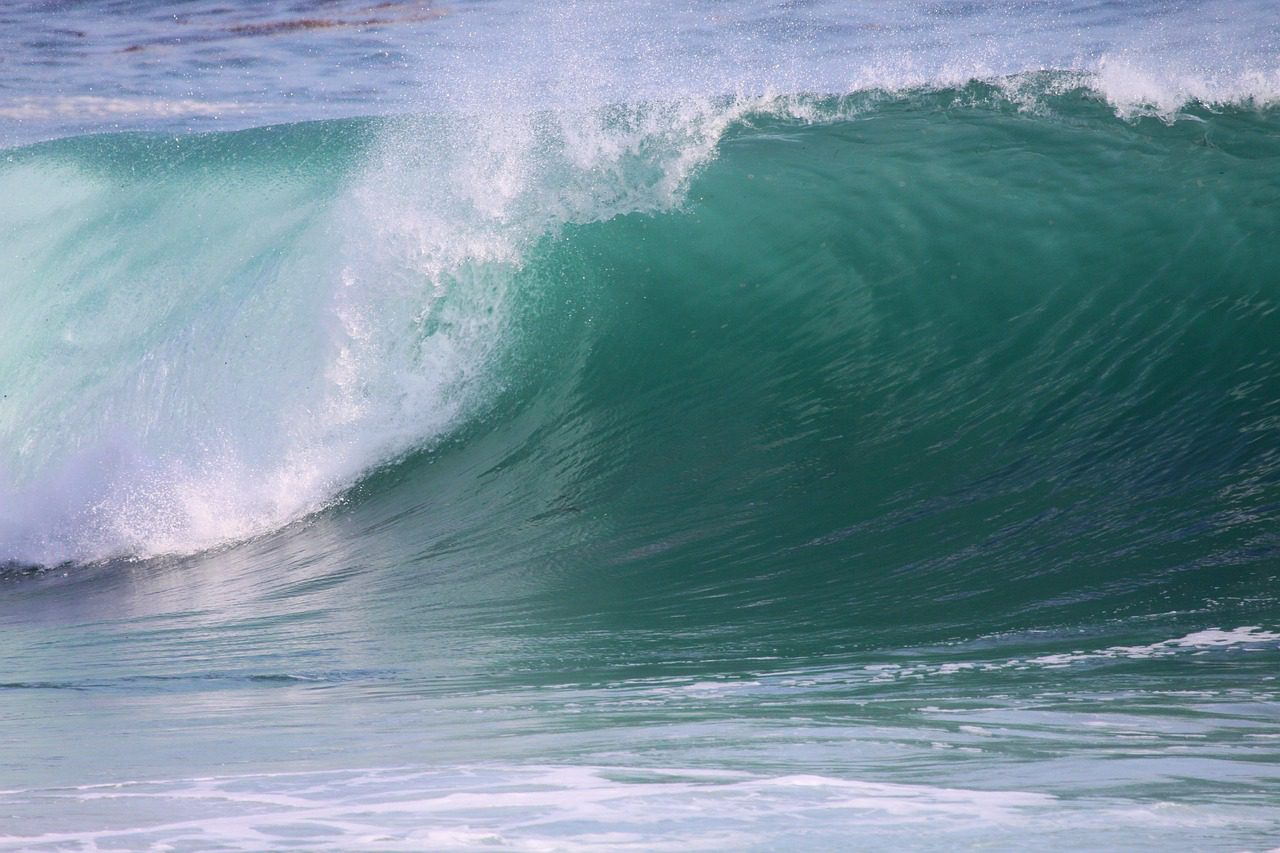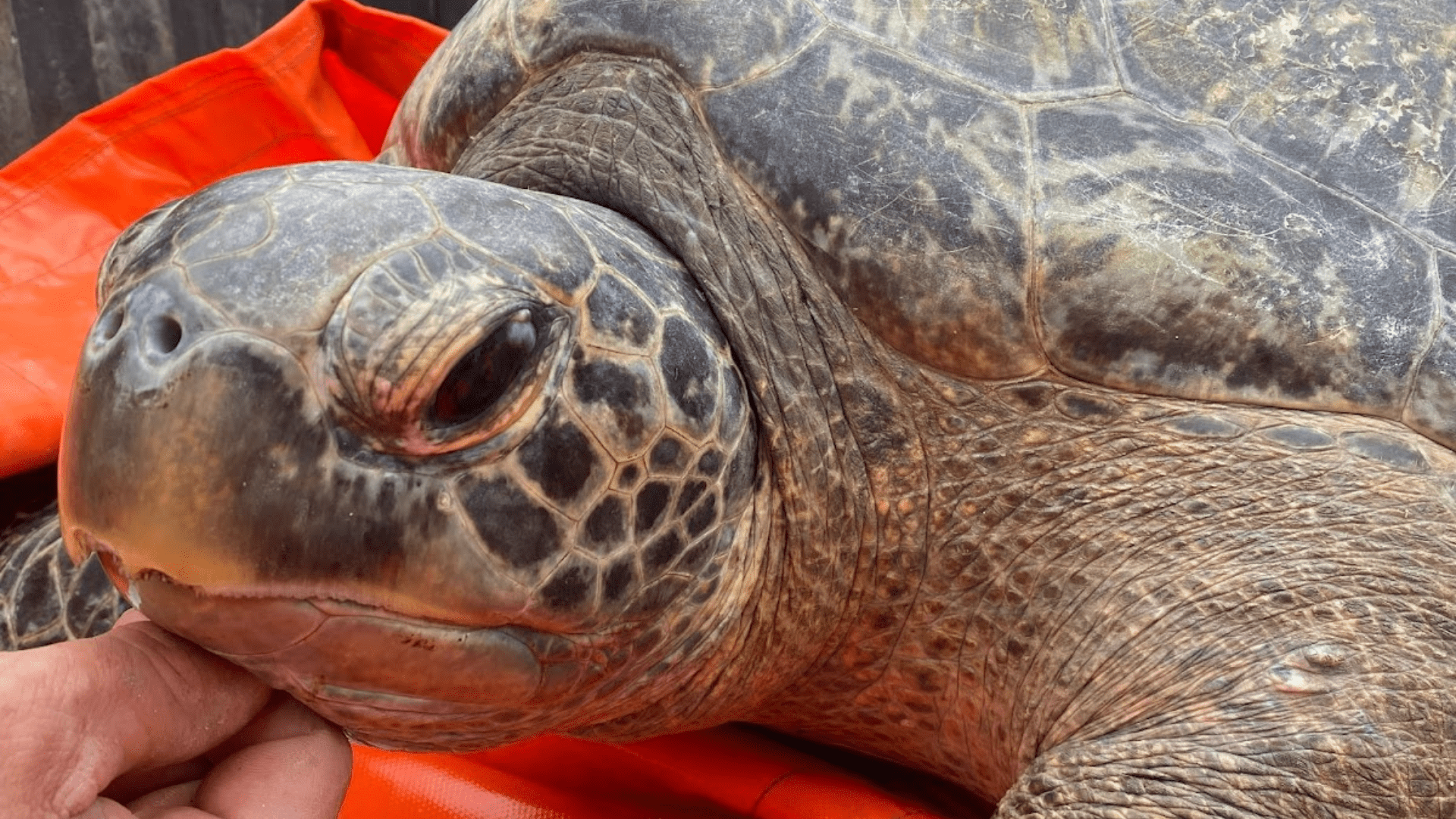Featured header image: NOAA Permit #18238
The Best Kept Secret of San Diego Bay’s Precious Eelgrass Beds
Did you know that San Diego Bay is home to black sea turtles? Officially known as the ‘East Pacific green sea turtle‘ (Chelonia mydas), the ‘black sea turtle’ is smaller and darker in color than others of its species, and our local population has historically nested on the beaches of southern Mexico. Their numbers fell due to hunting both sea turtles and their eggs, but they have thankfully begun to recover due to ambitious conservation efforts since the early 1990s.
Environmental Conservation in San Diego Bay Help Sea Turtle Populations


Upon emerging from their nests, hatchlings swim out to the open ocean to spend their juvenile years before returning to coastal areas in search of their favorite foods as adults: eelgrass and the small invertebrates that live amongst it. San Diego’s south bay contains a staggering 17 percent of California’s total eelgrass beds, and this vital habitat provides rich feeding grounds for adult turtles, who will eventually return to their natal nesting beaches to continue the cycle. San Diego Coastkeeper takes pride in our work to protect the bay and its watershed, which began in 1995, aligning with this recovery period for both San Diego sea turtles and the eelgrass beds on which they rely.
Thanks to ongoing monitoring efforts by the National Oceanic and Atmospheric Administration (NOAA) and the United States Navy, we know over one hundred sea turtles live in San Diego Bay, which may surprise many of us. Over the years, their population went largely undetected. Still, their growing numbers are a fantastic testament to local conservation efforts.
However, activity in the bay has changed over the years, and the rise in boat traffic brings the risk of boat strikes, which is the biggest threat to sea turtles. We can all do our part by raising awareness of the existence of San Diego sea turtles among boaters, who can help protect them by maintaining lower boat speeds, reading nautical charts, and remaining vigilant while operating boats in the bay. Promoting and maintaining conservation ethics in the southern part of the bay is essential, with high concentrations of eelgrass beds and sea turtle habitats.
San Diego Eelgrass Beds are a Climate Change Safe Haven


The eelgrass beds provide food and habitat for a recovering California sea turtle population and help combat the broader global threat responsible for rising sea temperatures and increasing the severity and frequency of extreme weather: climate change. The eelgrass beds in San Diego Bay are currently estimated to store over 1.7 million metric tons of CO2 as ‘blue carbon,’ which would otherwise exist as greenhouse gases in our atmosphere. That’s the same amount of CO2 that 370,784 cars admit annually!
By protecting and enhancing this vital habitat for sea turtles in San Diego, we are simultaneously locking in massive amounts of carbon at the bottom of the bay to help promote a livable future globally. Eelgrass beds also improve water quality, provide benthic structure to make coastlines more resilient against storm surges and sea level rise, and provide nursery habitat for various marine species, including commercially and recreationally valuable fish. In this way, sea turtles are considered an ‘umbrella species, ’ which means that by protecting them, we will simultaneously protect many other species within that same ecosystem, including sea bass, seahorses, sea hares, and what they need to eat.
Thank you to NOAA and the U.S. Navy for inviting our team to join them for a day of field research to learn about their efforts to monitor this iconic species and better understand how to protect them. This conservation success inspires us, and will continue to protect our coastal waters with the hope that marine life, such as the black sea turtle, will continue to exist for future generations.
















